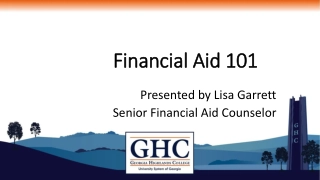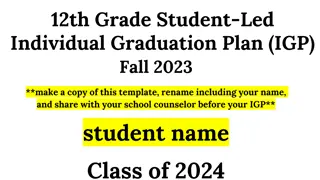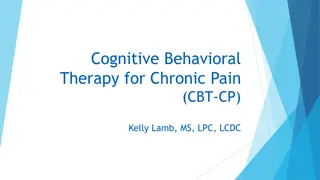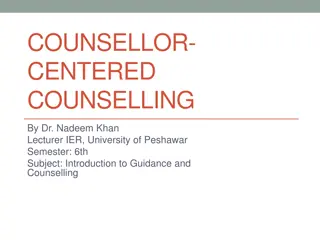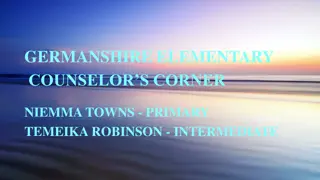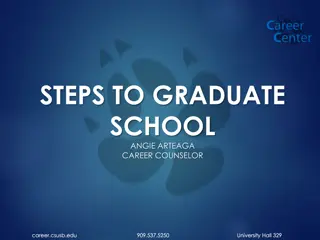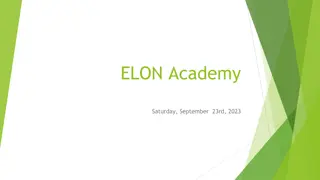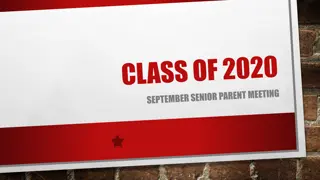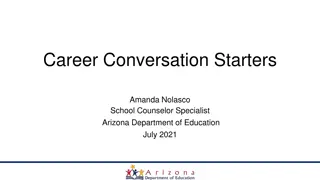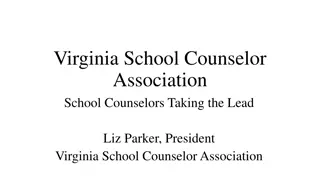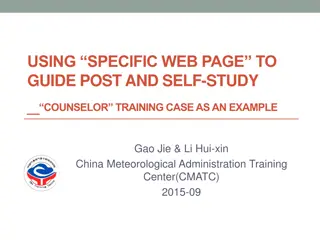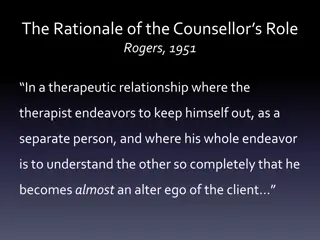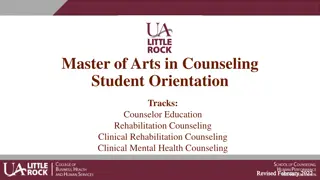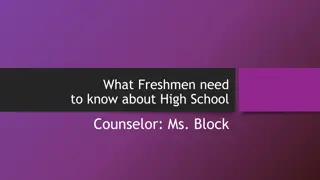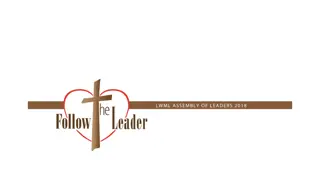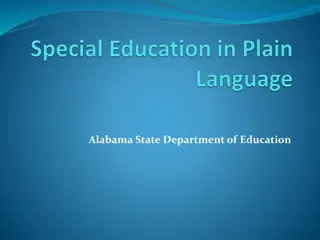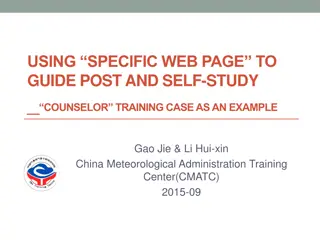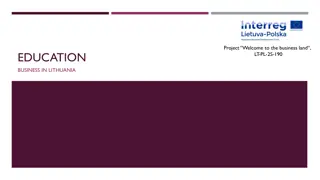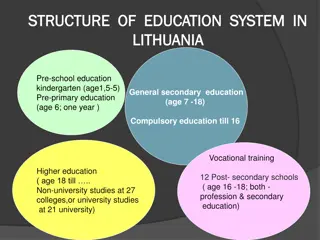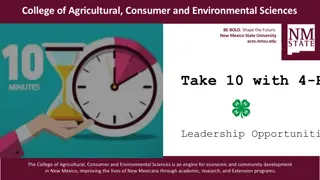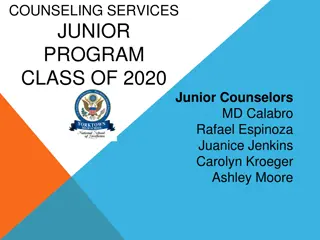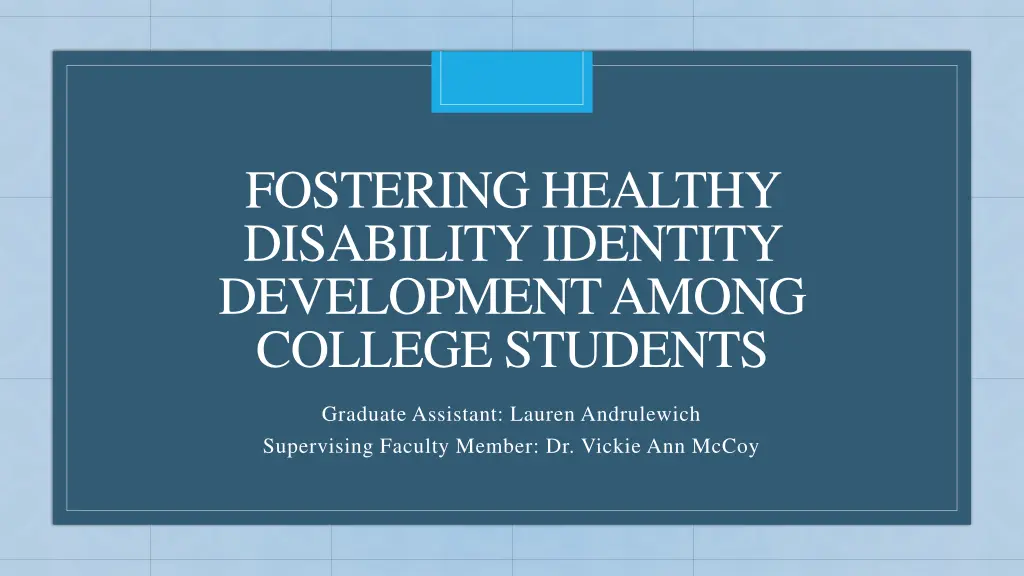
Empowering College Students with Disabilities through Identity Development
Explore the importance of fostering healthy disability identity development among college students. Understand the intersectionality of disability, the different models of disability, critical disability theory, and the challenges of ableism faced by students with disabilities on campuses.
Download Presentation

Please find below an Image/Link to download the presentation.
The content on the website is provided AS IS for your information and personal use only. It may not be sold, licensed, or shared on other websites without obtaining consent from the author. If you encounter any issues during the download, it is possible that the publisher has removed the file from their server.
You are allowed to download the files provided on this website for personal or commercial use, subject to the condition that they are used lawfully. All files are the property of their respective owners.
The content on the website is provided AS IS for your information and personal use only. It may not be sold, licensed, or shared on other websites without obtaining consent from the author.
E N D
Presentation Transcript
FOSTERING HEALTHY DISABILITY IDENTITY DEVELOPMENT AMONG COLLEGE STUDENTS C Graduate Assistant: Lauren Andrulewich Supervising Faculty Member: Dr. Vickie Ann McCoy
Disability Identity Development Disability is both a functional difference and an important component of cultural identity Can occur at any point in an individual s life Shapes how an individual looks at the themselves and interacts with the world (Forber-Pratt & Zape, 2017) Related literature about healthy disability identity development on campuses is scarce but emergent
Importance of Intersectionality Originated from African American Feminist theory and became popular among LGBTQ and other minority populations (Crenshaw, 1991; Cho, Crenshaw, & McCall, 2013) Disability identity does not develop in isolation Outcome is much more complicated than the sum of its parts Looking at privilege and marginalization one label at a time does not allow us to see the complexities of identity development Understanding student identity development through intersectionality reflects meaning found at the intersection of multiple identities
Disability Models Sociocultural Model of Disability Postmodern Approach Medical Model Disability is a negative characteristic, an impairment that needs a cure or assistance from professional intervention Disability is neutral until society causes it to be a disadvantage Consider how disabilities may become a positive aspect of an individual s life
Critical Disability Theory (CDT) Disability is not seen as a personal limitation, but analyzed as a cultural, historical, relative, social, and political phenomenon (Hall, 2019) Promotes activism and social justice Anyone can enter at any time, and we will all join it if we live long enough (Garland-Thomson, 2002, p. 20)
Ableism Defined as the privileging of able bodies and minds that renders others abnormal and less worthy (Linton, 1998) College students with disabilities faced ableism despite receiving appropriate accommodations under Americans with Disabilities Act Taking an intersectional approach to ableism allows higher education professions to see intersecting systems of oppression on campus (Pe a, Stapleton, & Schaffer, 2016) Resistance to ableism can help their psychological health and foster healthy psychosocial and identity development (Forber-Pratt & Zape, 2017)
Healthy Identity Development Student wellness perspective Academic perspective Constructivist campus life perspective Contribute to a student s sense a well-being that shapes into an adult with disabilities functioning and well-being (Erikson, 1994; Christiansen, 1999) Contribute to self- understanding and ability to appreciate and contextualize strengths, challenges, and uniqueness (Marcia, 2002) Helps students more deeply understand the contextual meaning of disability related challenges in their college experiences
Model of Social & Psychosocial Disability Identity Development (Forber-Pratt & Zape, 2017) Emerged from a qualitative study Contains four developmental statuses, they are not linear It is not necessary to move through the statuses at any given point, or ever Possible for an individual to simultaneously be in more than one status at a time Unlike racial identity, individuals may not have anyone in their family or community that shares their experience Meeting others with disabilities and forming relationships is important in the identity developing process
Four Developmental Statuses Acceptance Status Relationship Status Engagement Status Adoption Status Become disabled and/or born with disability Person accepts own disability Close friends and family are accepting of the disability Person meets others like herself/himself Engages in conversation with these individuals Learns about the ways of the group Adopts the shared values of the group Becomes a role model for others Help those who may be in other statuses Give back to the disability community (Forber-Pratt & Zape, 2017)
Transition to College Millennial college students with disabilities may be used to having support from parents and the K-12 system Transitioning from K-12 system to college is a time of change and growth On campus, disability disclosure and use of accommodations is optional which may lead to students downplaying their disabilities or embracing the new freedom Students with disabilities are faced with additional layers of adjustment (Brinckerhoff, McGuire, & Shaw 2002; Janiga & Costenbader 2002; Milsom & Hartley 2005)
Importance in Higher Education Helpful for higher education professionals to understand where each student is in developing their disability identity when working with them (Forber-Pratt & Zape, 2017) Each individual may be deciding how much they identify with the disability community, so it is important to not push too hard Recognize that not every individual with a disability has accepted it
How to use in Higher Education Create intersectional program with speakers, workshops, arts events (Jennrich & Kowalski-Braun, 2014) It is about embracing disability culture and identity, not just accessibility Create opportunities of interaction on campus for students with and without disabilities Establish a disability culture center (Evans, Broido, Brown, & Wilkie, 2017) Creating a community on campus can help students seek peer assistance with academics or advocacy (Forber-Pratt & Zape, 2017) Set up events or spaces with individuals with disabilities can come together and potentially build a network of support and comfort Create inclusivity with a universally designed campus (McGuire, Scott, & Shaw, 2004)
References Brinckerhoff, L. C., McGuire, J. M., & Shaw, S. F. (2002). Postsecondary education and transition for students with learning disabilities. PRO-ED, Inc., Austin, TX. Cho, S., Crenshaw, K. W., & McCall, L. (2013). Toward a field of intersectionality studies: Theory, applications, and praxis. Signs, 38, 785 810. doi:10.1086/669608. Christiansen C. H. (1999). Defining lives: Occupation as identity: An essay on competence, coherence, and the creation of meaning. American Journal of Occupational Therapy, 53(6), 547 558. https://doi.org/10.5014/ajot.53.6.547 Crenshaw, K. (1991). Mapping the margins: Intersectionality, identity politics, and violence against women of color. Stanford Law Review, 43(6), 1241-1299. doi:10.2307/1229039 Erikson, E. H. (1968). Identity. New York, NY: Norton Evans, N. J., Broido, E. M., Brown, K. R., & Wilkie, A. K. (2017). Disability in Higher Education: A Social Justice Approach. San Francisco, CA: Jossey Bass. Finkelstein (1993). Forber-Pratt, A. J., & Zape, M. P. (2017). Disability identity development model: Voices from the ADA-generation. Disability and Health Journal, 10(2), 350 355. https://doi.org/10.1016/j.dhjo.2016.12.013 Fornauf, B. S., & Erickson, J. D. (2020). Toward an inclusive pedagogy through universal design for learning in higher education: A review of the literature. Journal of Postsecondary Education and Disability, 33(2), 183-199. Garland-Thomson, R. (2002). Integrating disability, transforming feminist theory. NWSA Journal, 14(3), 1-32. Retrieved October 12, 2020, from http://www.jstor.org/stable/4316922 Hadley, W. M. (2011). College students with disabilities: A student development perspective. New Directions for Higher Education, 2011 (154), 77 81. https://doi.org/10.1002/he.436 Hall, M. C. (2019). Critical disability theory. The Stanford Encyclopedia of Philosophy (Winter 2019). https://plato.stanford.edu/archives/win2019/entries/disability-critical
Hamraie, A. (2016). Universal design and the problem of post-disability ideology. Design and Culture, 8(3), 285-309. https://doi.org/10.1080/17547075.2016.1218714 Janiga, S. J., & Costenbader, V. (2002). The transition from high school to postsecondary education for students with learning disabilities: A survey of college service coordinators. Journal of Learning Disabilities, 35(5): 462 68. http://www.ahead-archive.org/uploads/publications/JPED/jped25_2/JPED25_2_FullDocument.pdf Jennrich, J., & Kowalski-Braun, M. (2014). My head is spinning: Doing authentic identity work in identity centers. Journal of Progressive Policy & Practice, 2, 199-212. Linton, S. (1998). Claiming Disability: Knowledge and Identity. New York, NY: New York University Press. Marcia, J. E. (2002) Identity and psychosocial development in adulthood, Identity, 2(1), 7-28. https://doi.org/10.1207/S1532706XID0201_02 McGuire, J. M., Scott, S. S. & Shaw, S. F. (2004) Universal Design for Instruction: The Paradigm, Its Principles, and Products for Enhancing Instructional Access. Journal of Postsecondary Education and Disability, 17(1), 10 20. https://eric.ed.gov/?id=EJ875999 Milsom, A., & M. T. Hartley. (2005). Assisting students with learning disabilities transitioning to college: What school counselors should know. Professional School Counseling, 8(5), 436 41. Retrieved October 13, 2020, from http://www.jstor.org/stable/42732520 Pe a, E. V., Stapleton, L. D., & Schaffer, L. M. (2016). Critical Perspectives on Disability Identity. New Directions for Student Services, 154, 85-96. http://dx.doi.org/10.1002/ss.20177 Schlossberg, N. K., Lynch, A. Q., & Chickering, A. W. (1989). Improving Higher Education Environments for Adults: Responsive Programs and Services from Entry to Departure. San Francisco: Jossey-Bass. Tinto, V. (1993). Leaving College: Rethinking the Causes and Cures of Student Attrition (2nd ed.). Chicago: University of Chicago Press.

